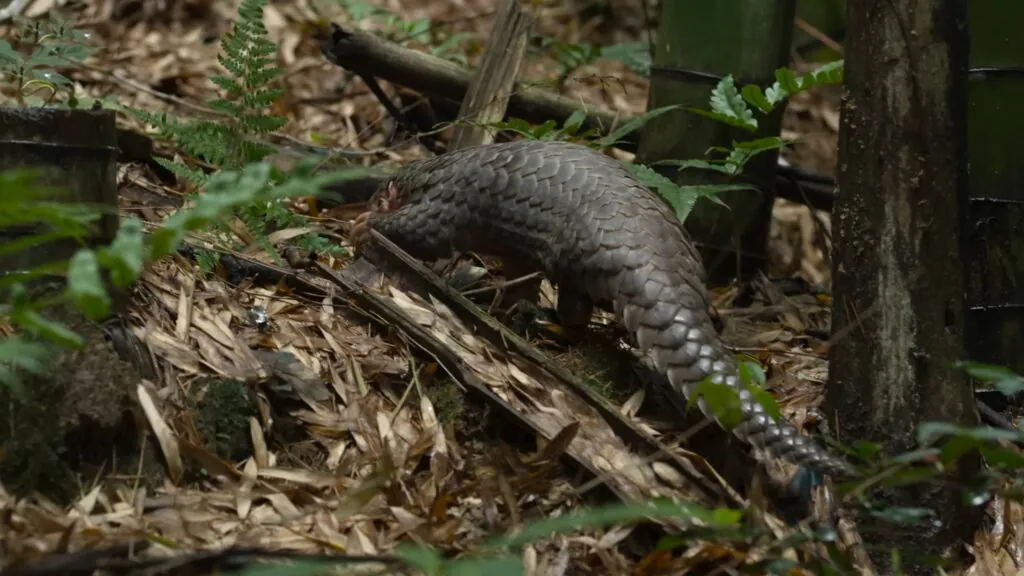When I first learned about pangolins, I was amazed by their unique and mysterious nature. Their armor of scales on their poor backs and their record-breaking sticky cheeks – pangolins are full of surprises. They are the only mammals in the world to have true scales, and they have become expert insect hunters and masters of self-defense – when they feel threatened, they roll themselves into a tight ball. Let’s dive into the top 10 facts about pangolins!
1. Scale Armor

Pangolins are mammals that have large protective scales made of keratin – the same protein found in human nails and rhino horns. Their scales can be up to 20% of their body weight, which helps them roll into a ball for protection when they feel in danger.
2. Long, Sticky Tongue

Their tongue can be longer than their body, sometimes up to 40 cm (16 inches). This adaptation helps them enter tight spaces and reach ants and termites, making them very effective in controlling insect populations.
3. Incredible Digestion

One of the 10 facts about pangolins is that, without teeth, they rely on swallowing small stones and sand to grind up insects in their stomachs. They eat approximately 70 million ants or termites each year, which helps in pest control.
4. Motherly Care

Pangolin mothers carry their young on their tails, protecting them and teaching them survival skills until they’re old enough to live independently. Their babies are born with soft scales, which harden within days.
5. Solitary and Independent

One of the 10 facts about pangolins is that these creatures, usually solitary during the day, come together only for mating. Their independence helps reduce competition for food and resources in the jungle.
6. Endangered Species

The IUCN conservation status of each pangolin species ranges from Vulnerable to Critically Endangered. They are the world’s most trafficked mammals, because their scales and meat are in high demand in traditional medicine, although there is no scientific evidence of their health benefits.
7. Environmental Sensitivity

Pangolins have a low metabolic rate, so they are sensitive to changes in temperature and rest by curling themselves into a ball, using their tail for stability and protection.
8. “Dinosaur” Walk

One of the 10 facts about pangolins is that some pangolins walk on their hind legs, balancing on their tails, which resembles the stance of small dinosaurs.
9. Slow Reproduction

Pangolins reproduce very slowly, usually giving birth to only one baby each year. This high reproduction rate further increases their risk of extinction.
10. Pangolin Species

There are four species of pangolin found in Africa, and four species are also found in Asia.
The four species found in Asia are these:
The four species found in Africa are these:
In a nutshell, these 10 facts about pangolins show just how remarkable and vulnerable these creatures are. From their scale-covered bodies to their essential role in balancing the ecosystem, each pangolin fact highlights their uniqueness and the urgent need for their conservation.



